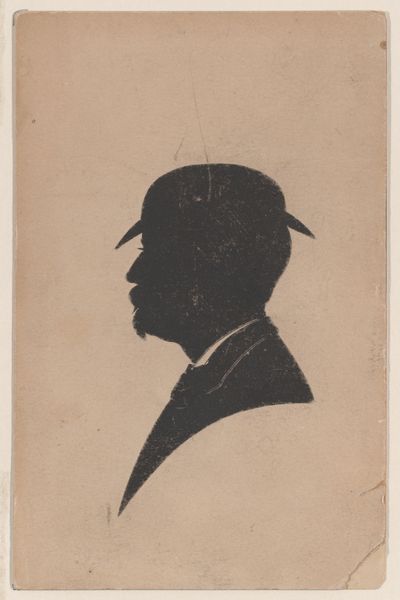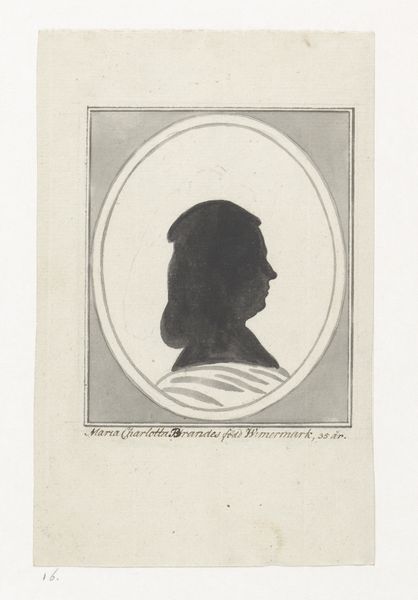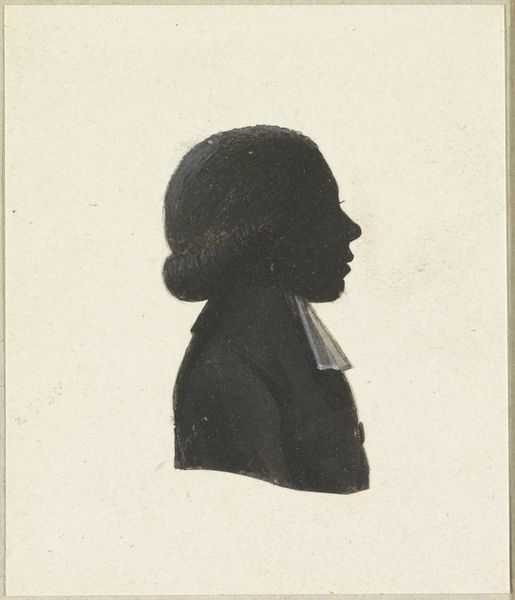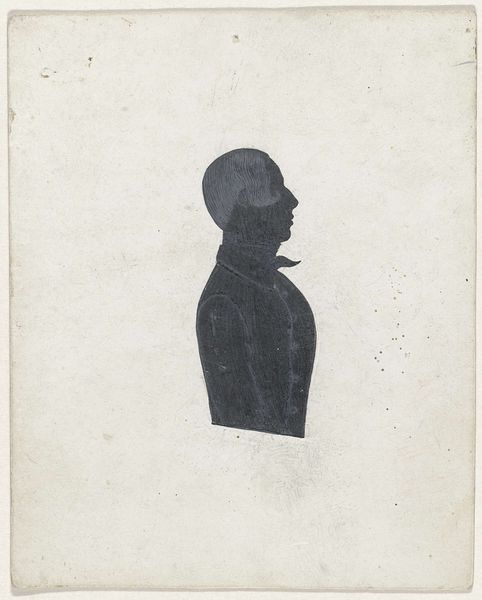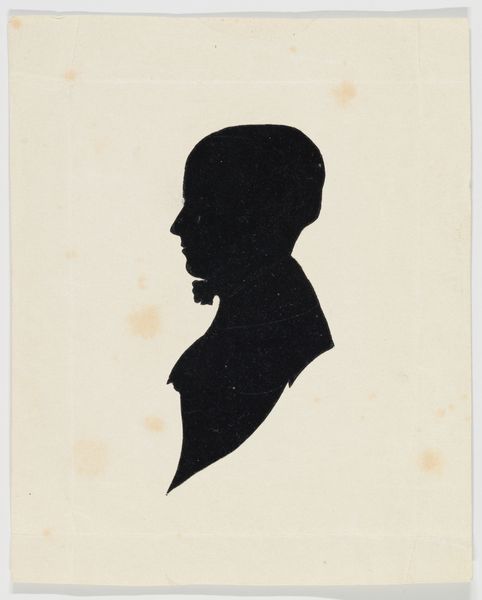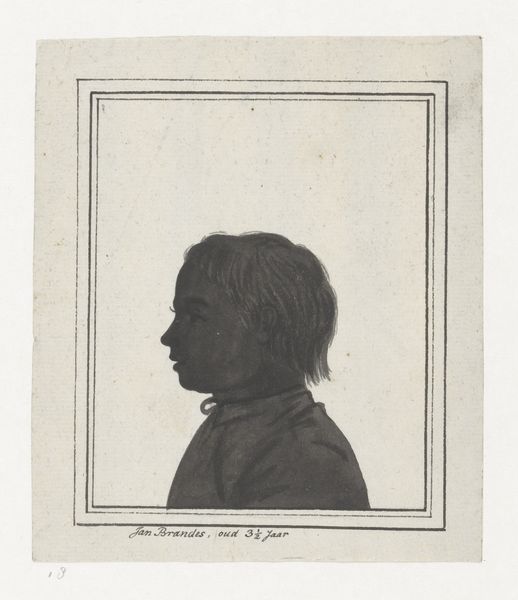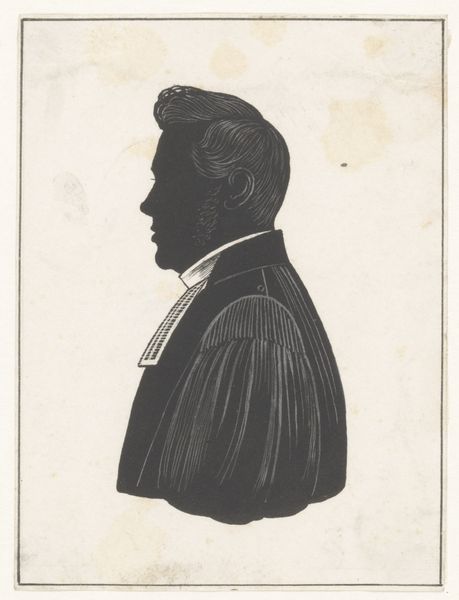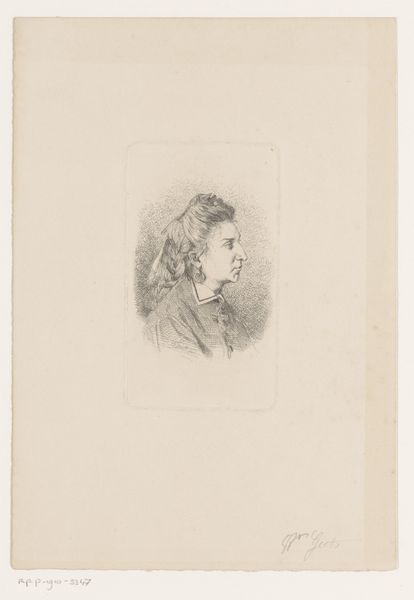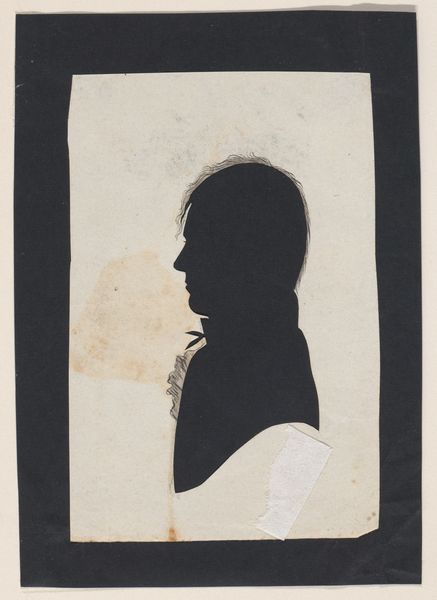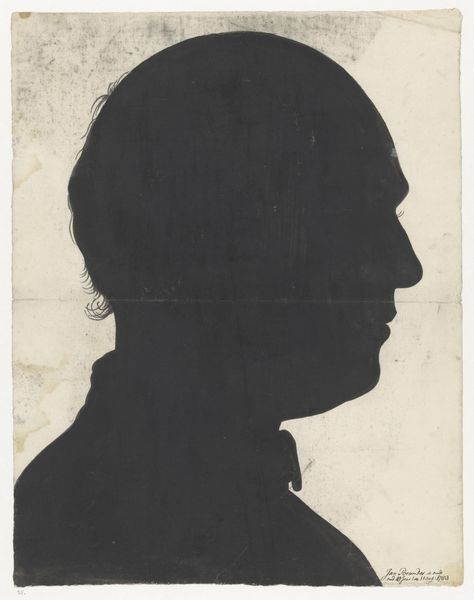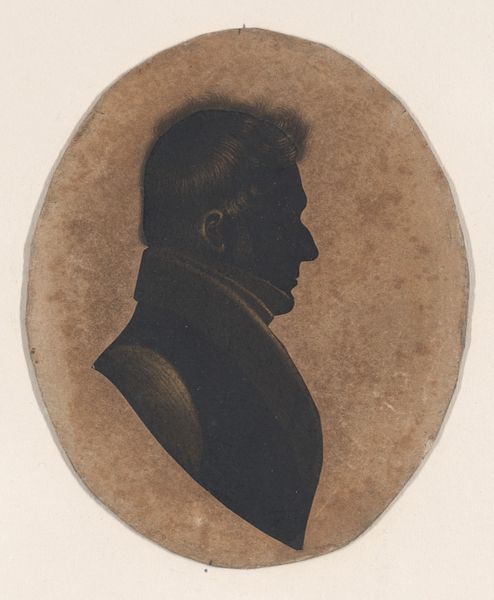
drawing, ink
#
portrait
#
drawing
#
pencil sketch
#
figuration
#
ink
#
romanticism
Dimensions: height 126 mm, width 86 mm
Copyright: Rijks Museum: Open Domain
Curator: This drawing is entitled "Silhouet van een man, naar rechts", or "Silhouette of a man, facing right". It comes to us from the Rijksmuseum, created sometime between 1789 and 1822. It’s rendered in ink, possibly with some pencil work. Editor: Isn't it wonderfully mysterious? A dark shape against aged paper—instantly compelling. I feel drawn into considering his story. What was he like, this man reduced to essence? Curator: The silhouette as a medium experienced a boom in popularity during this era. It offered a relatively inexpensive and quick means of portraiture compared to painted portraits. Socially, it democratized image production, putting it within reach of a burgeoning middle class. Editor: It makes you wonder about the sitters, their occupations, maybe their ambitions. The very act of sitting for this was, perhaps, a unique cultural moment. I wonder, did they ponder about posterity when the silhouette was produced? Curator: Mass production and accessibility, enabled by the relative simplicity of materials – paper, ink, maybe a light source or simple machine to aid tracing—these factors transformed portraiture. Silhouette studios, akin to early photo booths, became part of the cultural landscape. Editor: I love thinking about the light by which it was created; and I get this slightly eerie feeling—perhaps born out of the void in the figure's persona that inevitably accompanies the constraints of silhouette art, you know? Curator: That’s an interesting reaction. We might interpret that as a symbolic erasure—or, perhaps, a universalizing effect, reducing individuality to archetypal form. What aspects evoke that sensation of “void” for you? Editor: Perhaps the solidness of the silhouette contrasts with the implied human fragility... It makes me wonder how people from our era will perceive representations of our modern selves in the centuries to come. Curator: Food for thought, indeed! This drawing serves as a window into past aesthetic values, as well as societal and economic realities shaping visual culture. Editor: Exactly. It prompts one to see representation and identity as processes that are ever evolving—constrained both by material factors and culture. I find that quietly exciting.
Comments
No comments
Be the first to comment and join the conversation on the ultimate creative platform.
